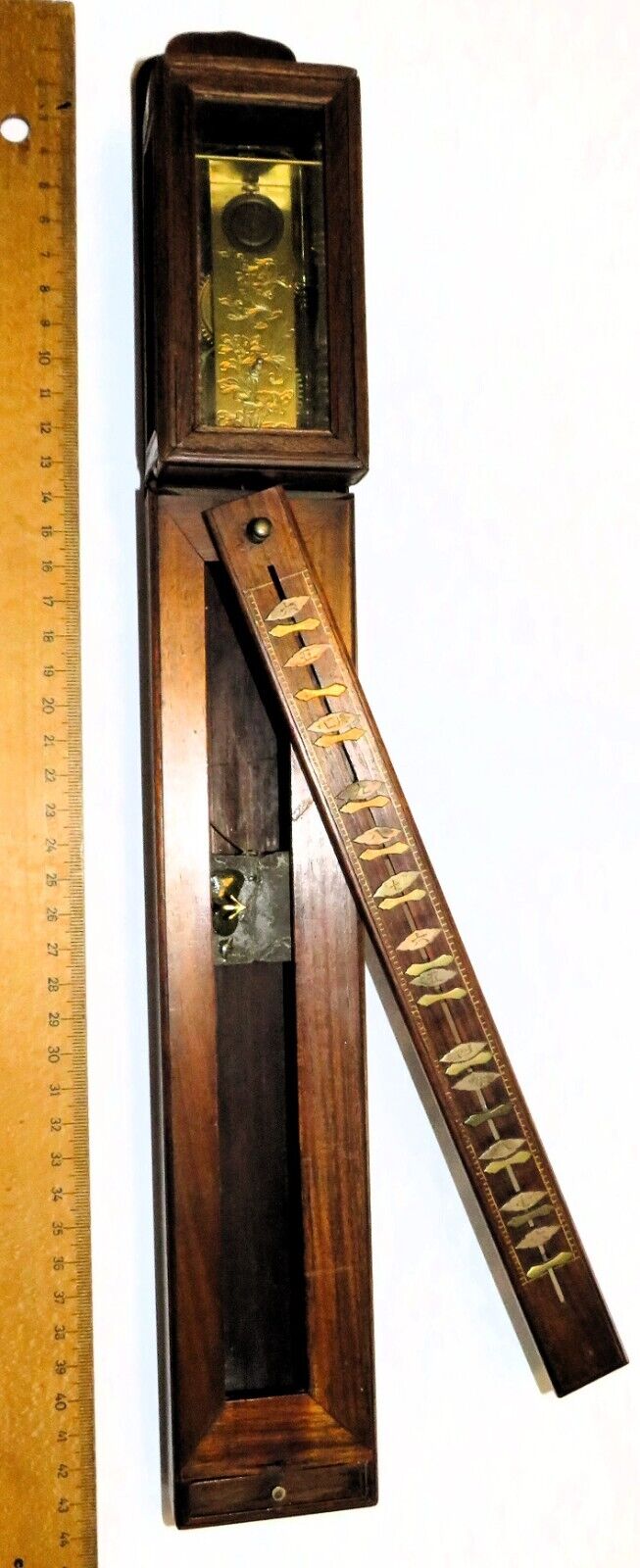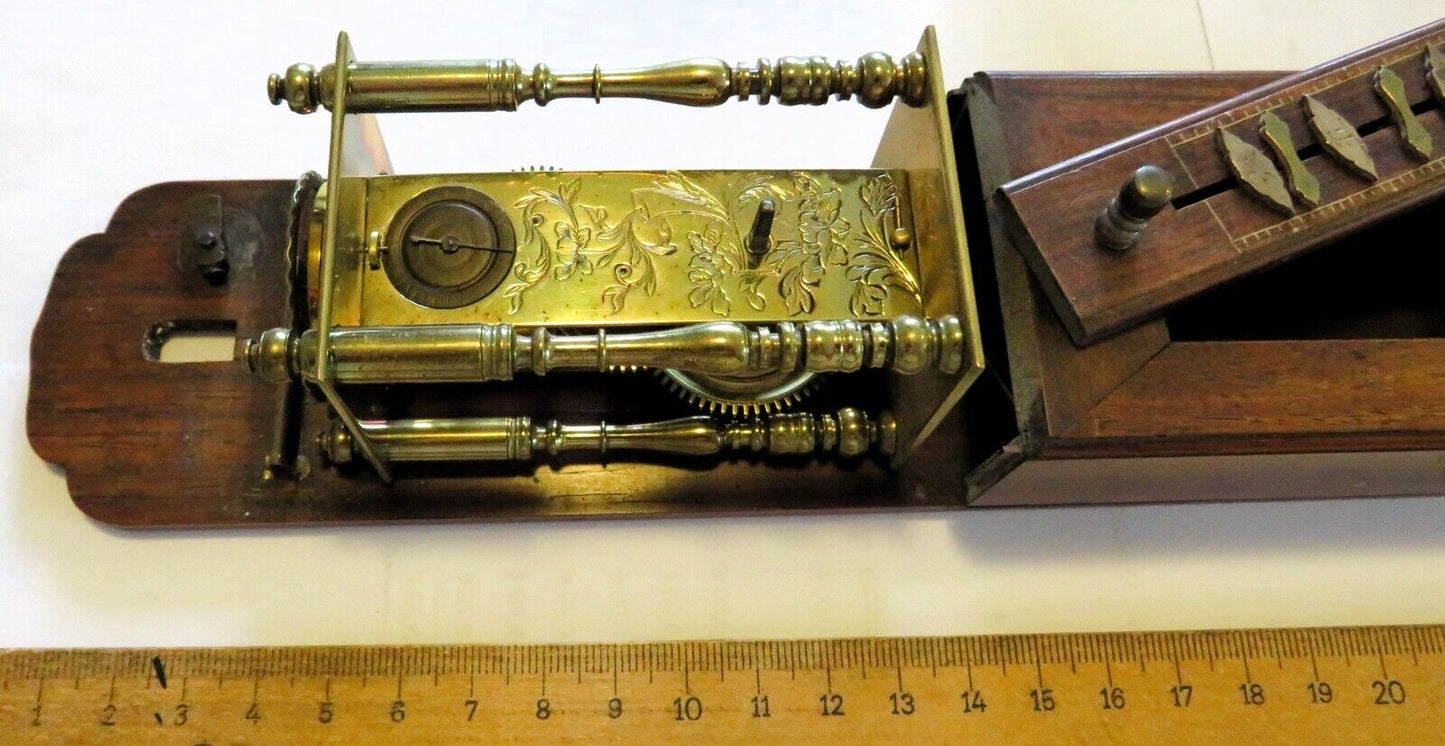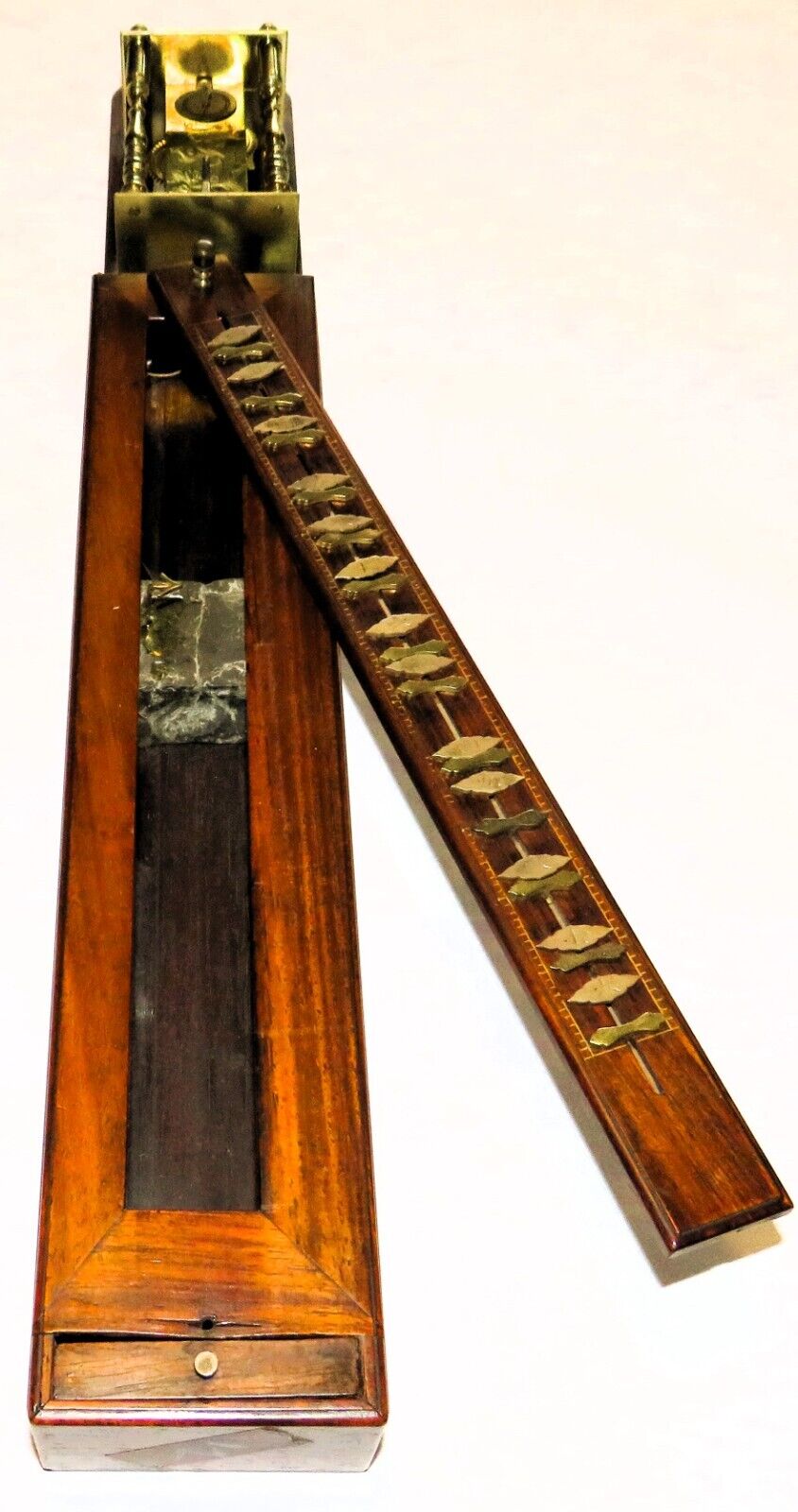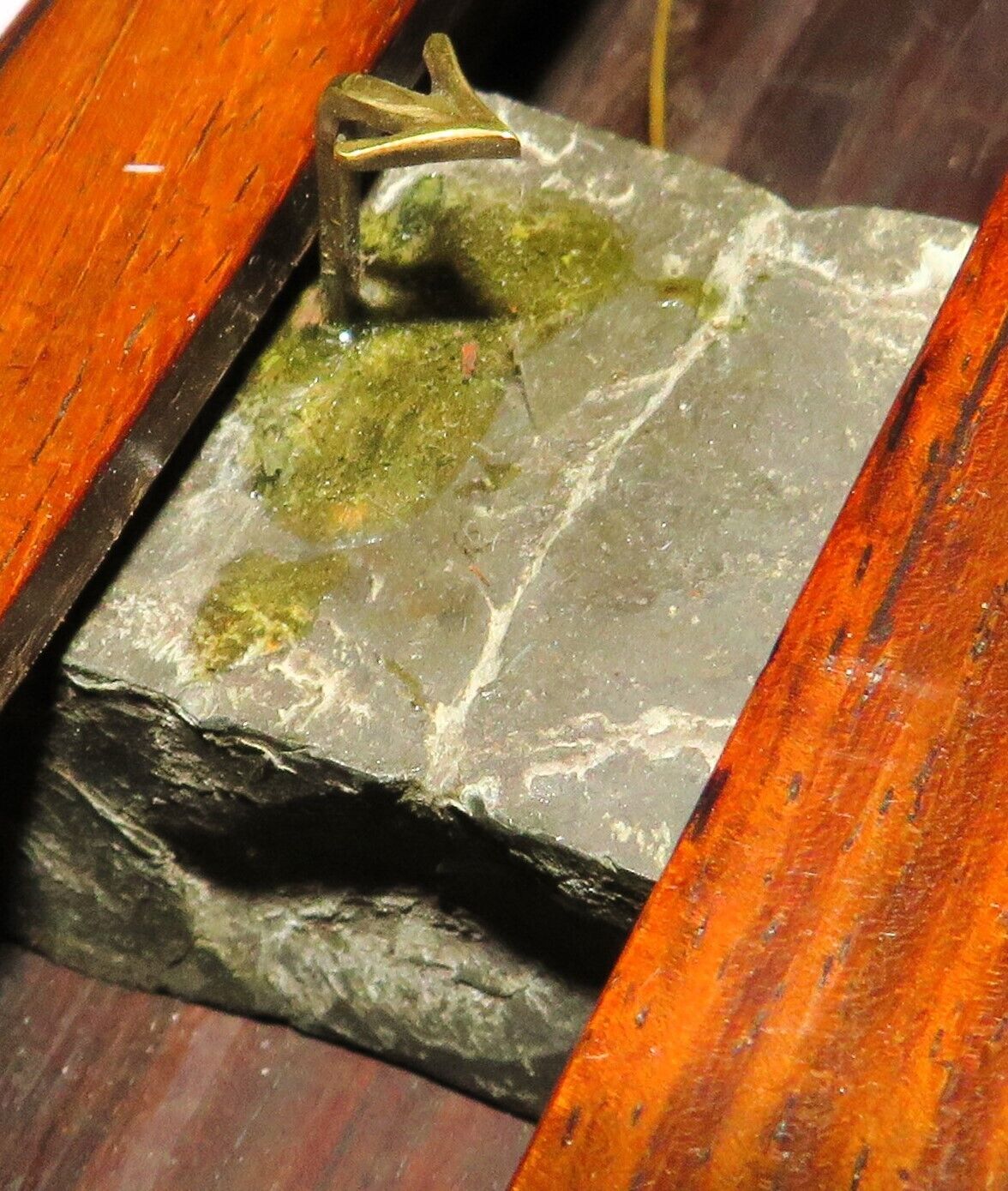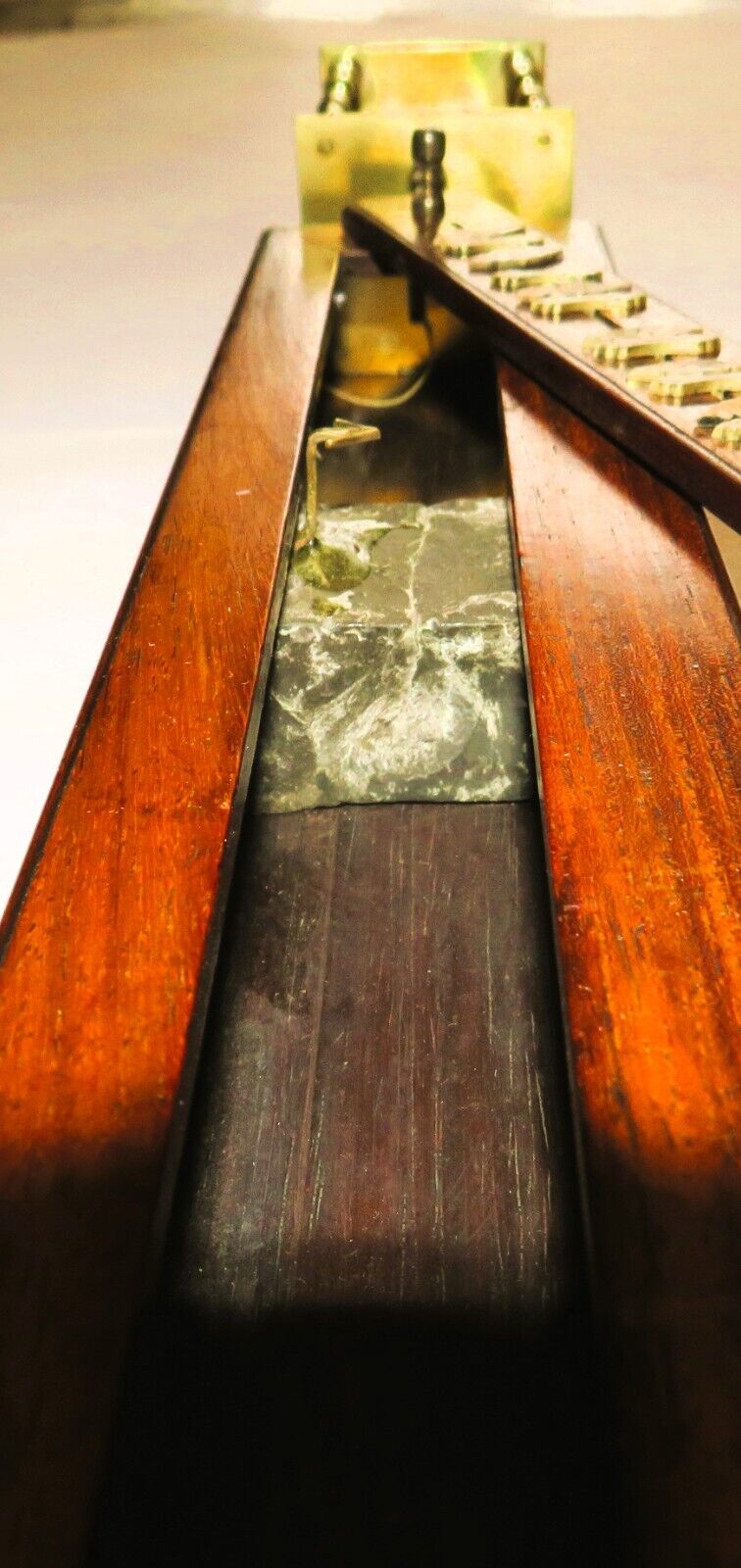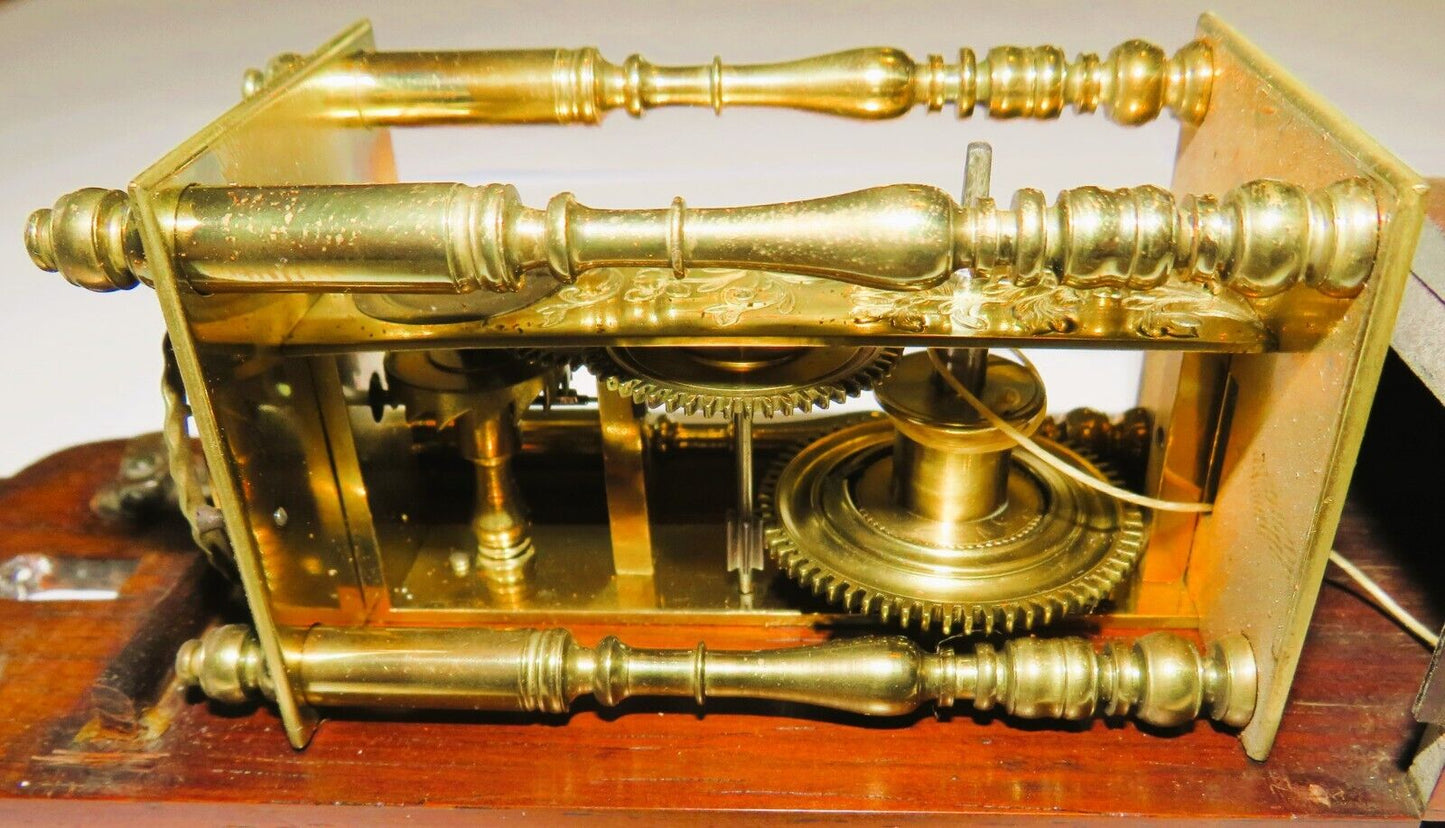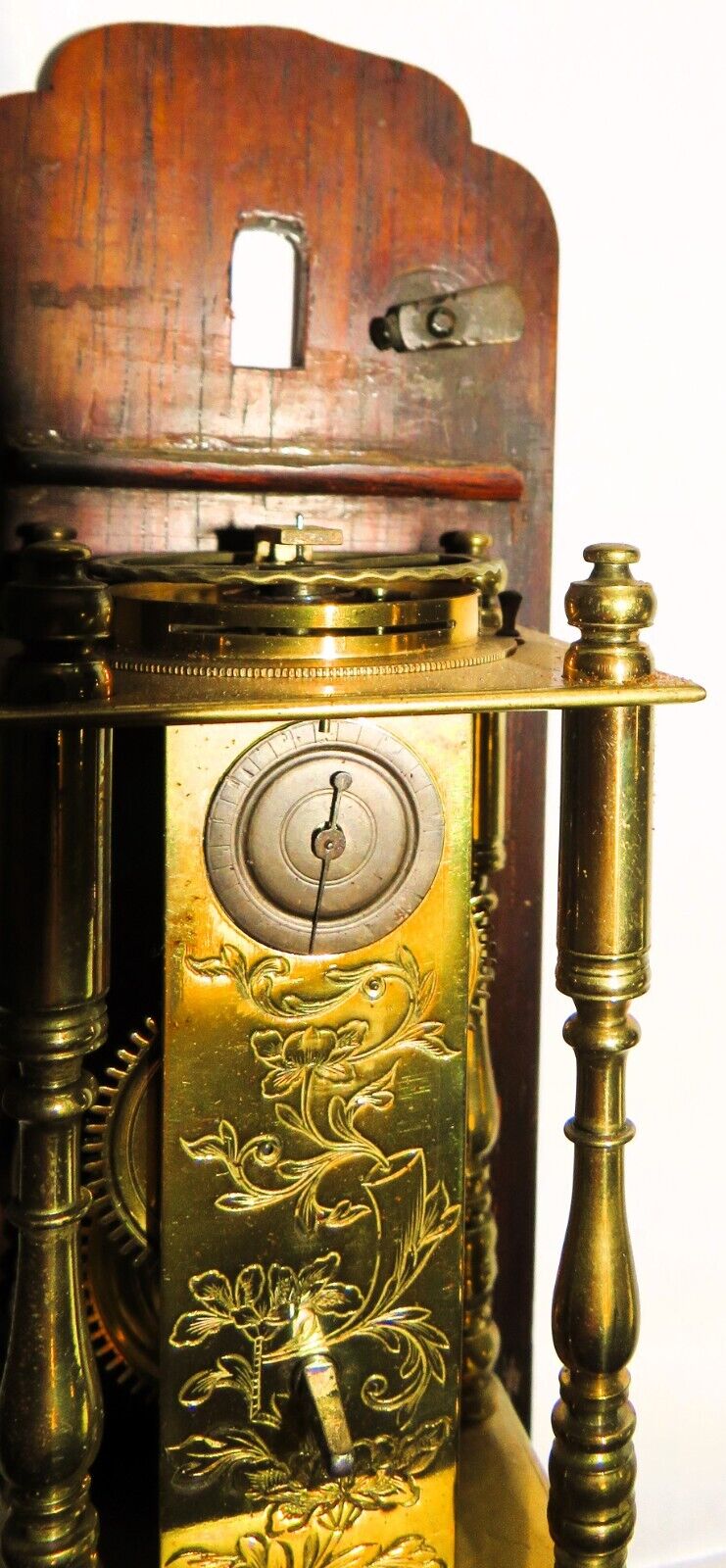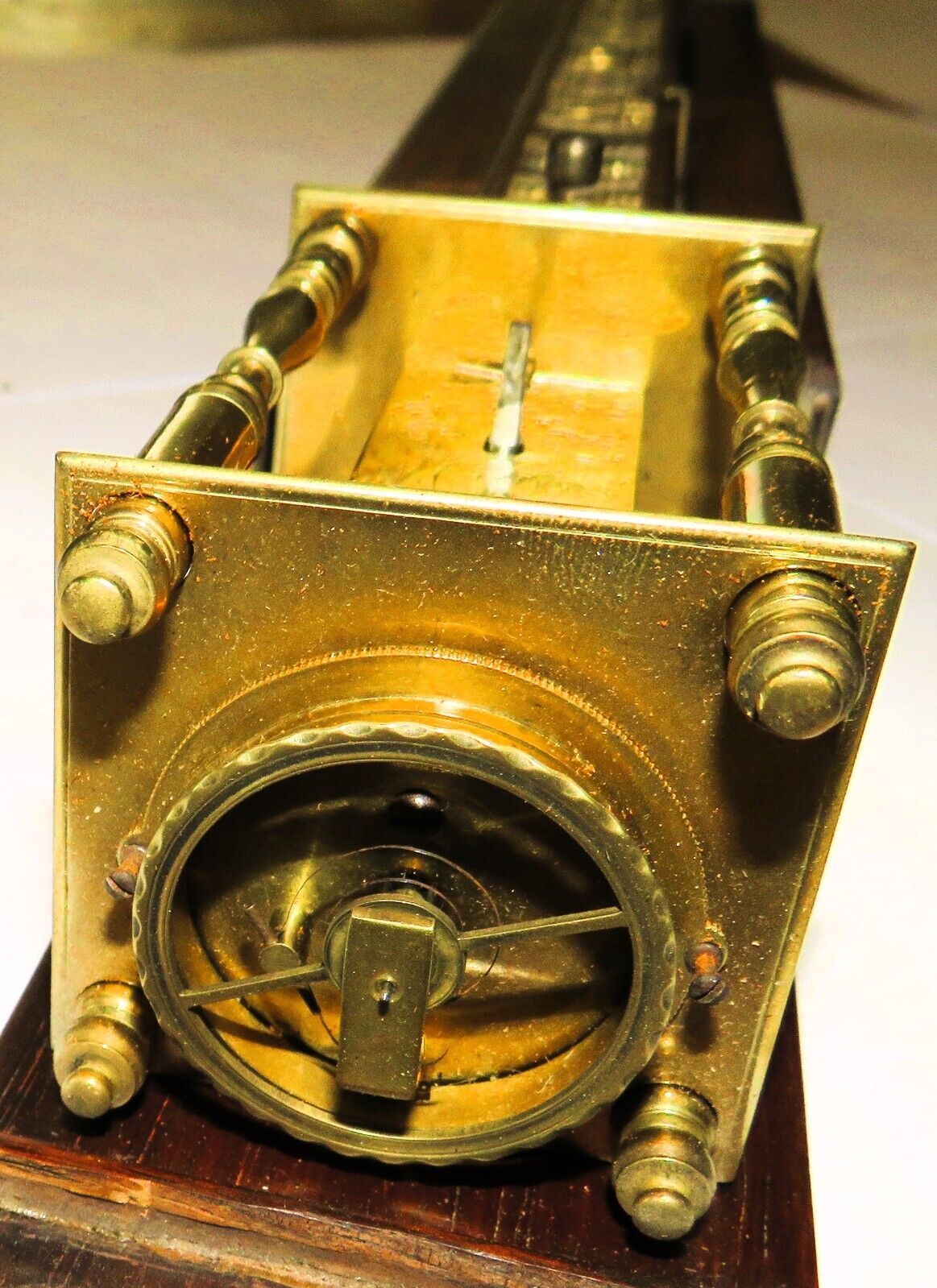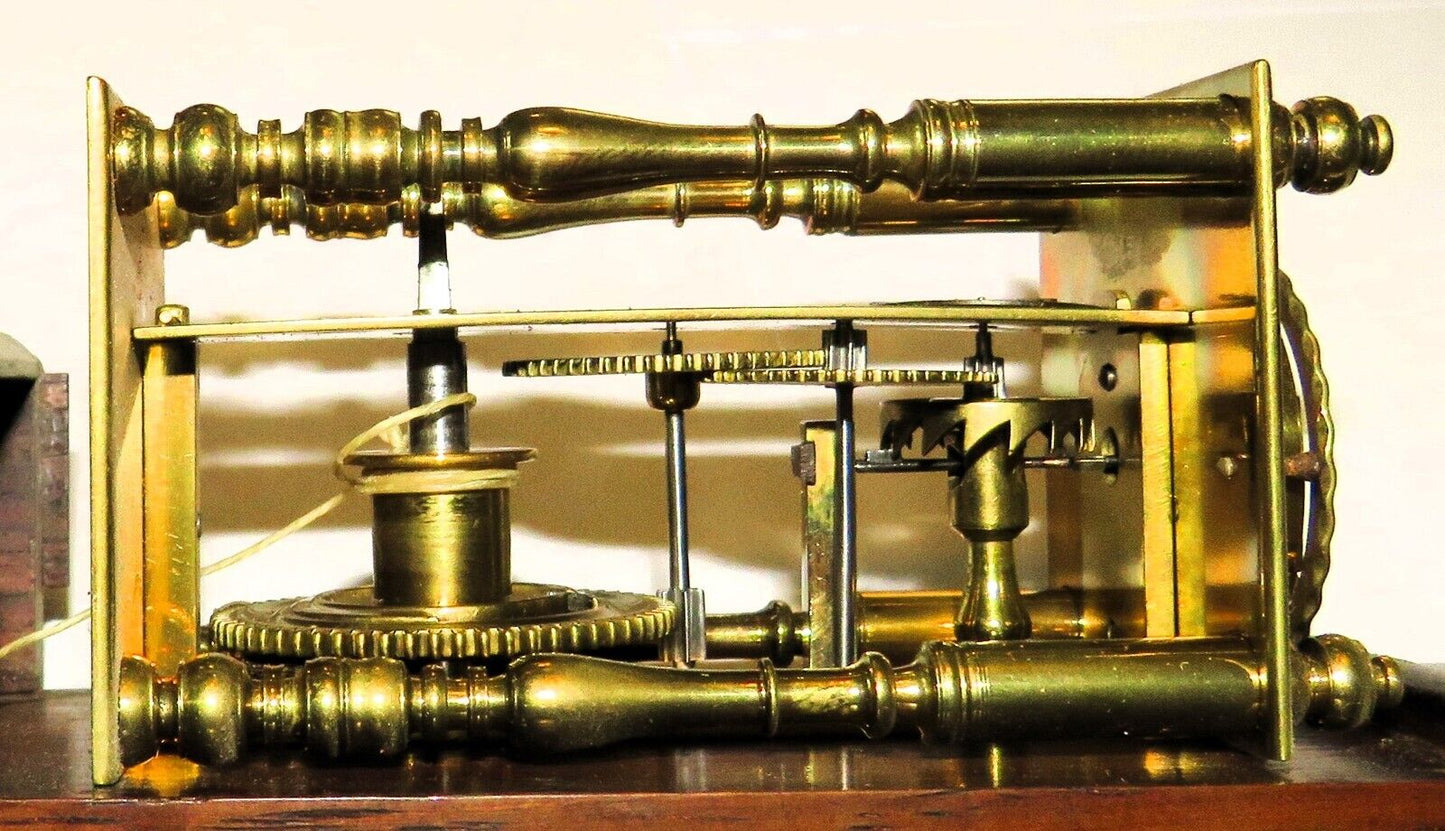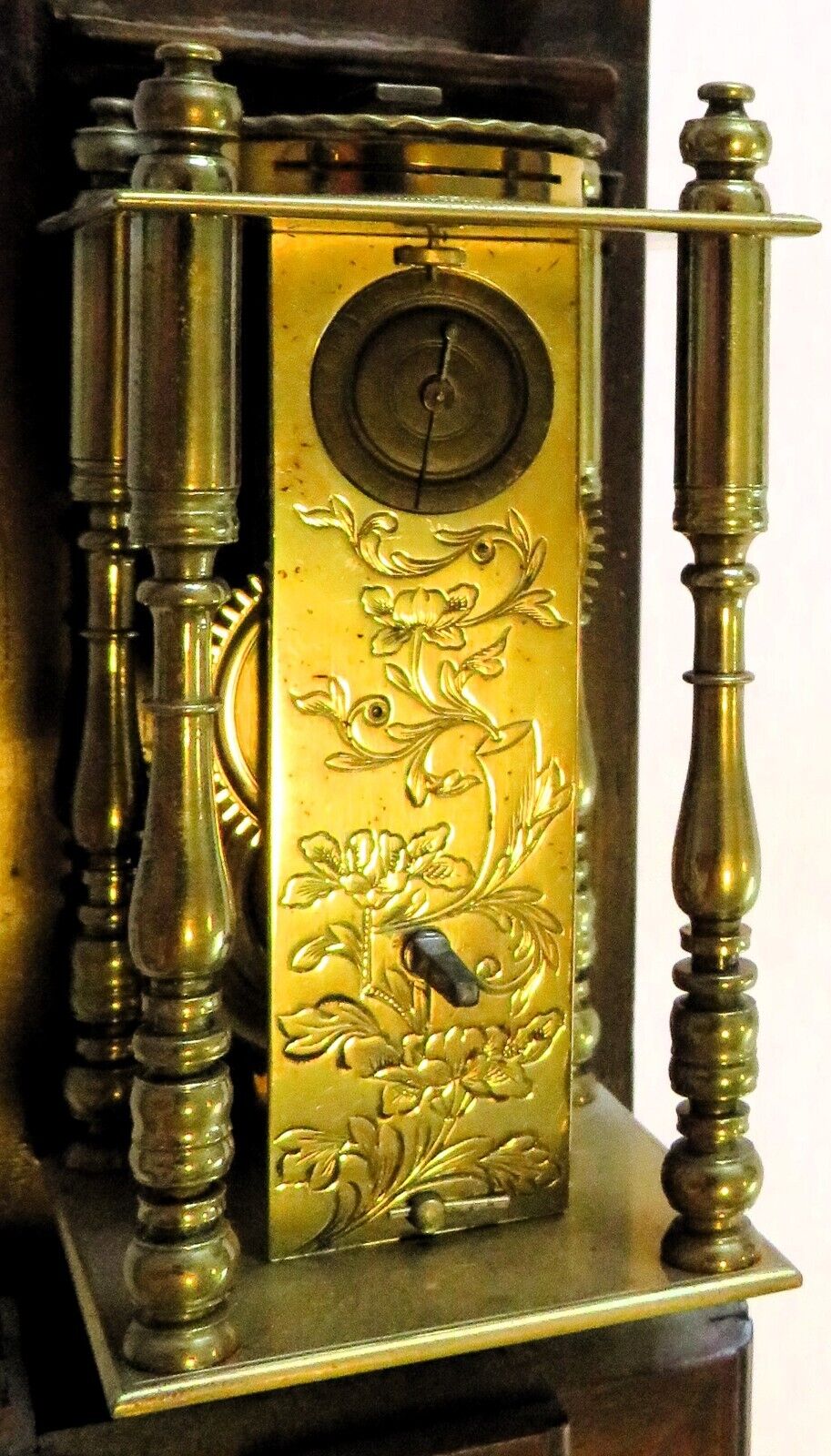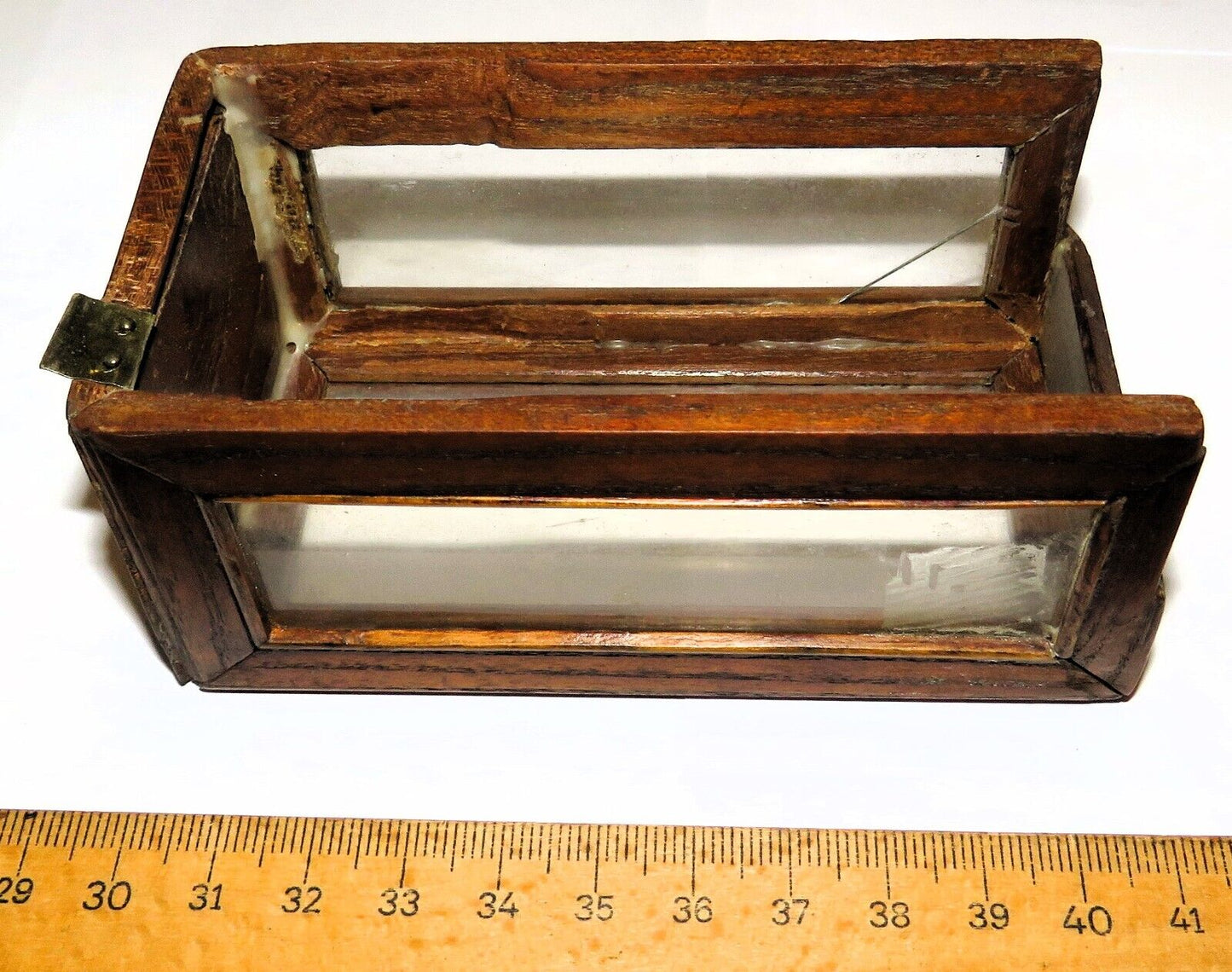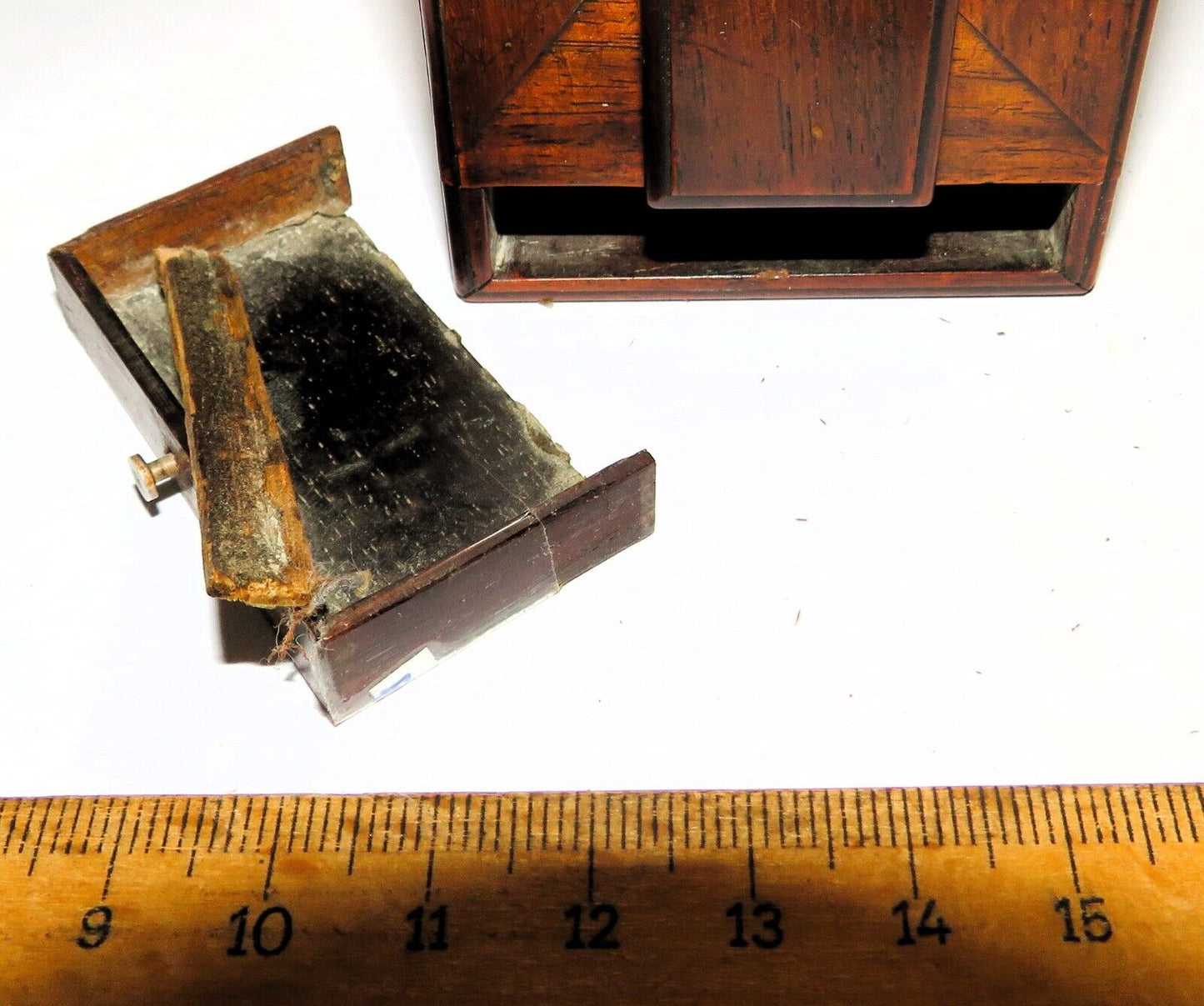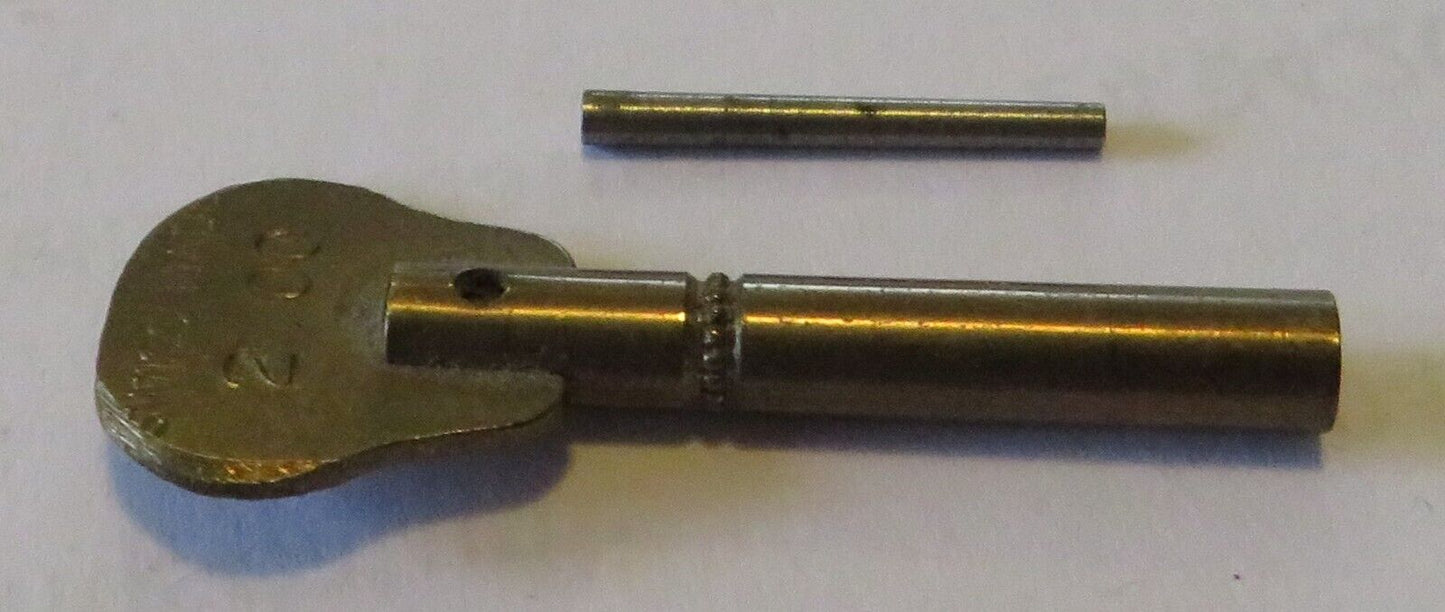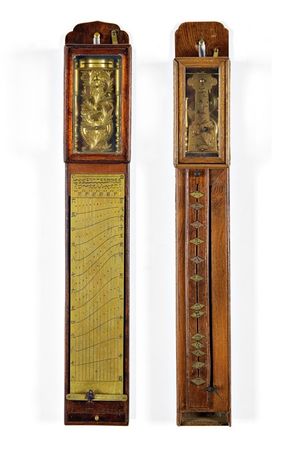Japanische Handarbeit
Museum-quality, super rare original Shaku Tokei Dokei Japanese column clock, circa 1780, 43 cm
Museum-quality, super rare original Shaku Tokei Dokei Japanese column clock, circa 1780, 43 cm
Couldn't load pickup availability
Absolutely unique, museum artifact and unique watch, which the most important museums in the world strive for and proudly display, for example the National Museum of Nature and Science, Tokyo , The British Museum , London , even the British Royal Family and other houses of the high nobility should own and care for a piece of these mostly handcrafted unique pieces:
Original Japanese Shaku Tokei column clock from around 1780
The history of this unique watch roughly summarized:
In the 16th century, Jesuit monks brought clocks with gears to Japan. In Europe and throughout the world, the day at that time had 24 hours, but in Japan, until 1873, the day was divided into 12 "tokeis," 6 for day and 6 for night.
Since day and night vary in length depending on the season, the length of the daily and nightly Tokeis is constantly changing
A "Shaku" Tokei combined a European-originated wheel movement with a highly complicated display system consisting of a weight on a thread and various individually handcrafted, interchangeable scales/"dials." The effect is that the arrow index visible in the images below moves
inhibited by the weight and pulled over the interchangeable "dials" according to date/month/season - depending on how precisely the work was carried out and how a time display was required
A Japanese "Shaku Tokei" is thus a "double mechanical" clock, which could measure and display the 12 daily Tokeis, each of different lengths depending on the season, but was still powered by a conventional mechanical movement with manual winding.
The art of the inventors and creators of the "Shaku Tokei" was the conversion/representation or stretching and shortening of the mechanical drive by a weight mechanism with arrow index and individually changing scales in the 19th century correct Japanese time
This unique and museum-worthy artifact is complete, starts, and functions—albeit only correctly for the season set on the figurative dial. The visible indices are movable, allowing the length of the daily and nightly tokeis to be manually adjusted depending on the season, rather than having to replace the dials and keep spare dials for all months, as was the case with the invention of the "Shaku Tokei."
Description:
JAPANESE PILLAR CLOCK, "Shaku Tokei", mahogany, top-mounted brass plate movement with baluster struts, verge escapement with balance wheel
Absolutely complete including the stone weight in which the "pointer" is embedded, you can also see the corresponding pull rope mounted on a roll in the movement, at the very bottom there is a small drawer, probably for storing the key
The unfixed wooden "superstructure" of the work has real glazing (1 glass with a diagonal crack)
The early rod work with the balance wheel at the top at a 90 degree angle is almost unique
Laterally pivoting front and "dial" with movable indices to adjust the length of the tokeis of the current season, thread suspension with weight, arrow index on the bottom left for time display, the hand is located in a weight and is visibly connected to the movement with its guide cable
Case height 43cm, Japan, 2nd half of the 17th century, width/depth at the top 5.5cm x 5.5cm, at the bottom 3.5cm x 5.5cm, so very, very delicate and elegant, the absolute highlight and sensation in stylish Japanese furnishings and decoration or Asian collection!
The museum artifact runs on and through, to what extent the existing thread to the pointer is correctly mounted and functions correctly and which season the current arrangement of the brass indices describes, we cannot check
EZ: 1-2: Excellent condition considering its age, completely complete, functional, no visible damage or deep scratches. The back panel of the small drawer at the bottom has come loose—but is still intact; one glass panel has a small crack.
Description of the history of the legendary "Shaku Tokei (Source: Watch Wiki and Uhrenmuseum Baden Würtemberg):
|
|
